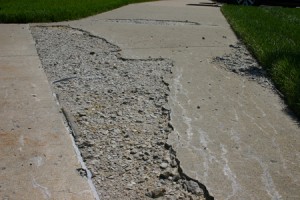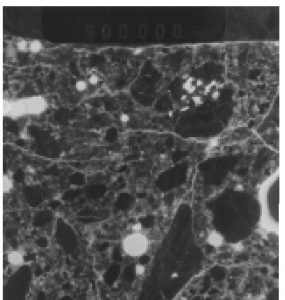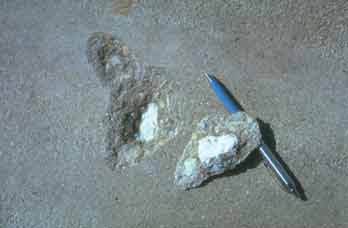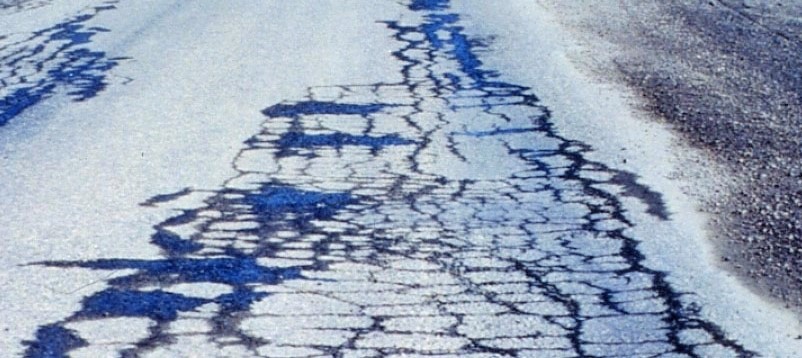In this article, the damage caused by freezing and thawing cycles to concrete is described. Freezing-thawing damage results from the fact that when water freezes to ice, it expands by about 9 percent. When the water in concrete freezes it produces pressure in the pores of the concrete. If the developed pressure exceeds the tensile strength of the concrete, cracking, scaling, and crumbling of the concrete occur.
Freeze-thaw damage may appear as either surface scaling or internal cracking.
Surface scaling mainly occurs water or snow can naturally deposit and the surface remain wet for periods and it might happen on both horizontal and vertical surfaces. The degree of surface scaling increases significantly in the presence of de-icing chemicals (such as NaCl-solutions). This damage is commonly observed on concrete paving blocks and road structures.

Internal cracking under field conditions is observed to a lesser extent. It might happen on parts of structures which are in direct contact with free water such as the lower parts of supporting piers and walls above the water surface. Moreover, freeze-thaw cracking may combine with or start after deterioration initiated by other damage mechanisms, such as alkali aggregate reactions.

Unlike surface scaling, the cracking usually starts at the interior parts (so, it is not visible at beginning) and then propagates to the surface may start at the interior.
It is worth noting that both surface scaling and internal cracking are progressive phenomena. In other words, the deterioration is gradual. Confirming that, no sudden failures have been reported according to our knowledge.
Freezing-thawing damage is related to the porous part of the concrete. The porous parts of concrete are:
- Cement paste
- Aggregates, if they are not dense and sound.
Coarse, non frost resistant aggregates, having a pore structure absorb water. Then, when freezing occurs, they expand and exert stress of the outside layer of concrete, causing damages called as “pop-outs”.

In order to reduce the freezing-thawing damage, one should give care to design a concrete with a good quality, including air-entrainment, using dense aggregate and so on. Another measure is to use a larger concrete cover, however, in this case, surface scaling will negatively influence aesthetics of the structure. In case of pop-outs, damages are more difficult to cope with and elements often have to be replaced.

This an informative piece of work.